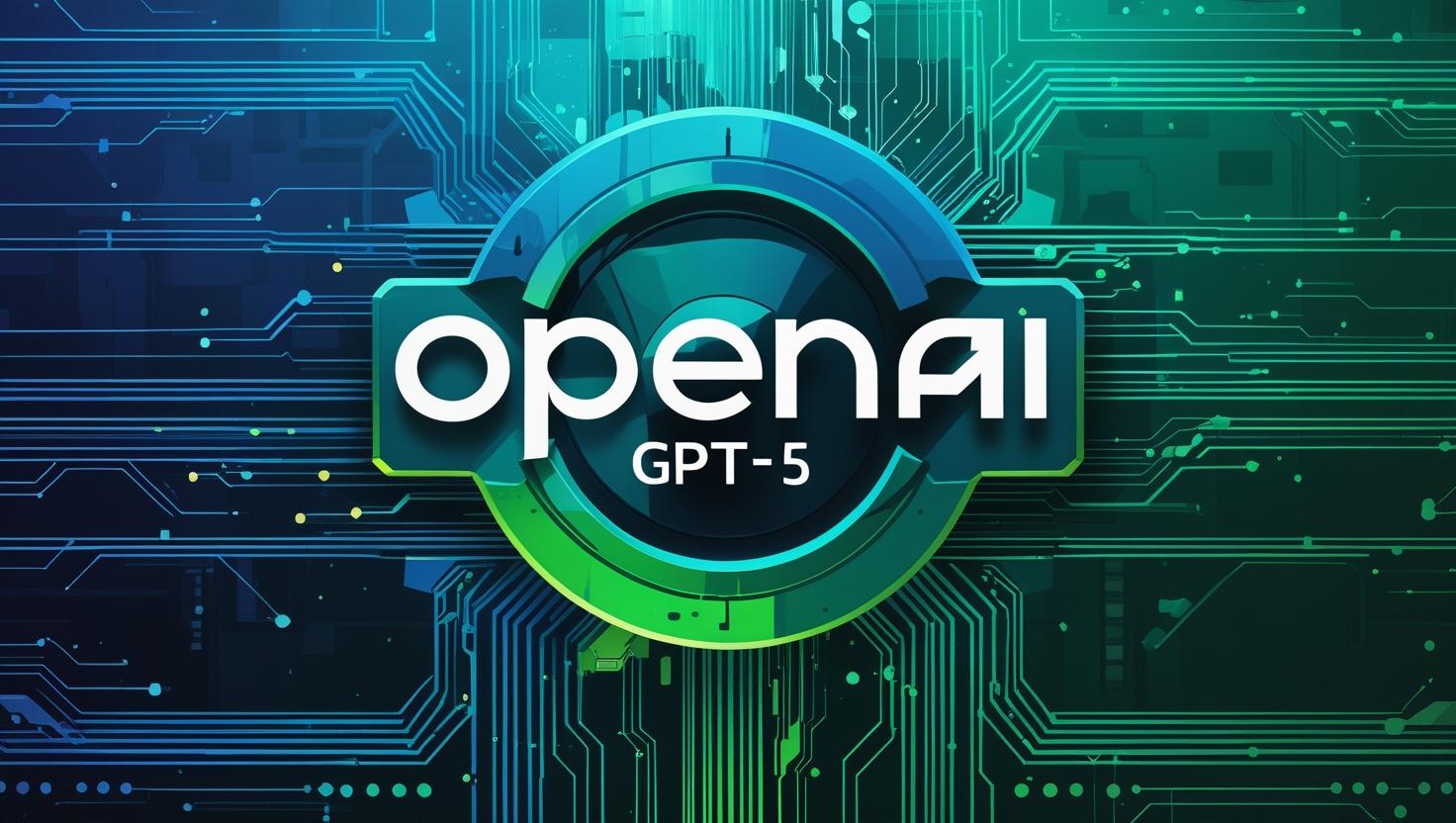The cybersecurity landscape is evolving at breakneck speed, with threats becoming increasingly sophisticated and organizations struggling to keep pace. Enter GPT-5, OpenAI’s latest breakthrough in artificial intelligence that promises to revolutionize how we approach digital security. With its enhanced reasoning capabilities, multimodal processing, and advanced automation features, GPT-5 represents a paradigm shift that could fundamentally transform cybersecurity operations, threat detection, and incident response procedures.
As cyber attacks grow more complex and frequent, traditional security measures are proving insufficient. The introduction of GPT-5 offers unprecedented opportunities to leverage artificial intelligence for proactive threat hunting, real-time vulnerability assessment, and intelligent security orchestration. This comprehensive exploration examines how GPT-5’s cutting-edge capabilities could reshape the cybersecurity industry and provide organizations with powerful new tools to defend against emerging digital threats.
Throughout this blog, where we mention it “could” do something, this is stated based on a mix of previous GPT models capabilities and how GPT-5 could enhance this, alongside OpenAI’s communications around GTP-5.
Understanding GPT-5’s Core Capabilities and Security Implications
GPT-5 represents a quantum leap in AI technology, introducing several groundbreaking features that have direct applications in cybersecurity. The model’s enhanced reasoning capabilities enable it to analyze complex security scenarios with unprecedented accuracy, while its improved context understanding allows for more nuanced threat assessment and risk evaluation.
One of the most significant advancements in GPT-5 is its ability to process and correlate vast amounts of security data simultaneously. This multimodal processing power means cybersecurity professionals can feed the AI diverse data types – from network logs and vulnerability reports to threat intelligence feeds and security incident documentation – and receive comprehensive, actionable insights in return.
The model’s advanced automation capabilities are particularly relevant for cybersecurity applications. GPT-5 can potentially automate routine security tasks, freeing up human analysts to focus on more strategic initiatives. This includes automated log analysis, preliminary threat classification, and even basic incident response procedures, dramatically improving response times and operational efficiency.
Enhanced Pattern Recognition for Threat Detection
GPT-5’s sophisticated pattern recognition abilities could revolutionize threat detection methodologies. Traditional signature-based detection systems often fail against zero-day attacks and advanced persistent threats (APTs). However, GPT-5’s ability to identify subtle patterns and anomalies in network behavior, user activities, and system configurations could enable the detection of previously unknown threat vectors.
The AI model’s capacity to learn from historical attack patterns while simultaneously analyzing real-time data streams creates opportunities for predictive threat intelligence. Organizations could leverage GPT-5 to anticipate potential attack vectors based on emerging trends in the threat landscape, enabling proactive security measures rather than reactive responses.
Advanced Threat Intelligence and Analysis
The cybersecurity industry generates enormous volumes of threat intelligence data daily, often overwhelming security teams with information that’s difficult to process and prioritize. GPT-5’s advanced natural language processing capabilities could transform how organizations consume, analyze, and act upon threat intelligence feeds.
By processing threat intelligence reports from multiple sources – including MITRE’s Common Vulnerabilities and Exposures (CVE) database, commercial threat feeds, and open-source intelligence – GPT-5 could provide contextual analysis that helps security teams understand the relevance and urgency of specific threats to their organization.
Automated Vulnerability Assessment and Prioritization
GPT-5’s analytical capabilities could significantly enhance vulnerability management processes. The AI could analyze vulnerability data not just based on CVSS scores, but by considering the specific context of an organization’s infrastructure, business operations, and threat landscape. This contextual analysis would enable more accurate risk prioritization and resource allocation.
The model could also correlate vulnerability information with exploit activity observed in the wild, helping organizations understand which vulnerabilities pose the greatest immediate risk. This intelligence-driven approach to vulnerability management could help security teams focus their patching efforts more effectively, reducing the window of exposure to active threats.
Furthermore, GPT-5 could automate the generation of detailed vulnerability reports, including impact assessments, remediation recommendations, and business risk calculations. This automation would significantly reduce the time required to communicate security risks to executive leadership and accelerate decision-making processes.
Intelligent Security Orchestration and Incident Response
Modern cybersecurity operations require coordinating multiple security tools, platforms, and response procedures. GPT-5’s advanced reasoning and automation capabilities could serve as an intelligent orchestration layer, coordinating complex security workflows and ensuring consistent, effective incident response.
The AI model could analyze incoming security alerts, correlate them with historical incident data, and automatically initiate appropriate response procedures. This could include isolating affected systems, gathering forensic evidence, notifying relevant stakeholders, and even implementing initial containment measures – all while maintaining detailed logs for subsequent analysis.
Enhanced Digital Forensics and Investigation
Digital forensics investigations often require analyzing vast amounts of data to reconstruct attack timelines and identify threat actor methodologies. GPT-5’s ability to process and correlate diverse data types could dramatically accelerate forensic investigations while improving accuracy and completeness.
The AI could analyze system logs, network traffic captures, memory dumps, and file system artifacts to identify indicators of compromise (IoCs) and reconstruct attack sequences. This automated analysis could help investigators quickly identify the scope of an incident, understand attack vectors, and develop appropriate remediation strategies.
Moreover, GPT-5 could generate comprehensive incident reports that communicate technical findings to both technical and non-technical audiences, ensuring that investigation results are properly understood and acted upon across the organization.
Proactive Security Awareness and Training
Human error remains one of the most significant cybersecurity risks, with social engineering and phishing attacks continuing to be highly effective attack vectors. GPT-5’s natural language capabilities could revolutionize security awareness training by creating personalized, dynamic training content that adapts to individual users’ roles, risk profiles, and learning preferences.
The AI could generate realistic phishing simulations tailored to current threat trends and organizational context. Rather than using generic templates, GPT-5 could create sophisticated, convincing attacks that challenge users appropriately while providing valuable learning opportunities.
Real-time Security Advisory and Guidance
GPT-5 could serve as an intelligent security advisor, providing real-time guidance to employees when they encounter potentially suspicious situations. The AI could analyze emails, attachments, or web content in real-time, offering contextual advice about potential risks and appropriate actions to take.
This capability could be particularly valuable for organizations with limited security staffing, as it would provide employees with immediate access to expert-level security guidance without requiring human intervention. The AI could also learn from user interactions, continuously improving its advice and adapting to evolving threat landscapes.
Advanced Malware Analysis and Reverse Engineering
Malware analysis is a complex, time-consuming process that requires deep technical expertise and specialized tools. GPT-5’s advanced reasoning capabilities could automate many aspects of malware analysis, from initial triage and classification to detailed behavior analysis and indicator extraction.
The AI could analyze malware samples using static and dynamic analysis techniques, identifying key characteristics, functionality, and potential impact. This automated analysis could help security teams quickly understand new threats and develop appropriate detection and mitigation strategies.
Automated Signature and Rule Generation
Based on its analysis of malware samples and attack patterns, GPT-5 could automatically generate detection signatures for security tools such as Suricata, Snort, or YARA rules for malware detection. This automation could significantly reduce the time between threat discovery and deployment of detection capabilities, improving overall security posture.
The AI could also continuously refine and optimize these signatures based on their effectiveness in production environments, ensuring that detection capabilities remain accurate and relevant as threats evolve.
Challenges and Considerations for GPT-5 in Cybersecurity
While GPT-5 offers tremendous potential for cybersecurity applications, organizations must carefully consider the challenges and risks associated with deploying AI in security-critical environments. Data privacy and confidentiality concerns are paramount, as security data often contains sensitive organizational information that must be protected.
Conclusion
As cyber threats continue to grow in complexity and scale, the need for intelligent, adaptive, and proactive defenses has never been greater. GPT-5 could represent a major leap forward in AI capabilities, with its enhanced understanding, contextual reasoning, and real-time processing power offering promising new tools for cybersecurity. From automating threat detection and response to improving vulnerability assessments and user education, GPT-5 could significantly bolster our ability to stay ahead of malicious actors. While it’s not a silver bullet, its integration into cybersecurity strategies may redefine how we protect digital infrastructure—transforming AI from a helpful assistant into a critical line of defense.

